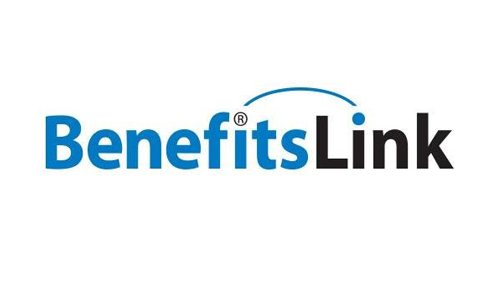
This is a critical time in our country’s response to the COVID-19 pandemic. Employers and their HR and benefits departments are beginning to look at how they can reopen and bring their employees back to work. Understandably, they have questions about COVID-19 leave and benefits requirements.
As the expectation for employees to return to the workplace increases, my team and I are getting many questions. The questions we are receiving typically relate to the new Families First Coronavirus Response Act (FFCRA). Employers are also asking about the Family and Medical Leave Act (FMLA) and how this law may apply to the coronavirus crisis. We’ll present three scenarios with different types of leave requests, but first, here is a bit of background:
Types of Leave
There are three types of leave available under the federal laws described above:
- FMLA: unpaid leave
- FFCRA: emergency paid sick leave
- FFCRA: emergency paid family and medical leave
To keep things simple, we won’t review specific state and local leave laws. Instead, we’ll use examples and illustrations that are similar to those discussed in the U.S. Department of Labor’s (DOL) FAQ guidance on this topic.
Scenario Set-up
A hypothetical employer, XYZ Corp, has less than 500 employees and is subject to both the FFCRA and FMLA. On March 15, 2020, XYZ Corp initiates a furlough. As a result, beginning on that date:
- Employees in Division A start working a reduced hourly schedule;
- Employees in Division B have their hours reduced to zero (0); and
- Employees in Division C are not subject to the furlough.
The furlough’s end date is May 15, 2020. On May 16, 2020 (the “recall date”), all furloughed employees are expected to return to XYZ Corp’s facility to work the same hours as prior to the furlough.
COVID-19 leave and benefits requirements vary by circumstance.
XYZ Corp’s health plan document contains eligibility terms that require the employer to offer health insurance coverage to full-time employees as defined by the ACA, and as defined over a 12-month measurement period. Therefore, XYZ Corp’s plan is in sync with the ACA.
Prior to March 15, 2020, the XYZ Corp HR team reviewed their employee handbook and benefits plan documents. The team decided to continue to offer health insurance to all furloughed employees retained on payroll during the furlough period and discussed this decision with their fully insured medical insurance carrier. The insurer agreed to allow XYZ’s employees to stay on the plan during the furlough period, even if the impacted employees no longer qualified as full-time under the plan document’s eligibility rules.
Three Leave Scenarios
1.
Abby Andrews works in Division A at XYZ on a reduced hourly schedule as required by the terms of the company’s furlough. She contacts her company’s HR rep on May 1, 2020, asking for emergency paid sick leave or emergency paid family and medical leave under the FFCRA.
The reason: she is severely ill and has been diagnosed with COVID-19. Her doctor has advised Abby to self-quarantine. Therefore, she cannot work or telework the reduced hours that she is required to fulfill during the furlough.
What kind of leave and benefits is Abby entitled to?
Under the FFCRA, Abby is entitled to take emergency paid sick leave because she has already been ordered to self-quarantine by a doctor, and she is severely ill with COVID-19.
How many hours of emergency paid sick leave is Abby entitled to, and how is this calculated?
Abby is entitled to take emergency paid sick leave hours that is equal to the number of hours that she currently works, on average, over a two-week period. However, if her hourly schedule is variable, or not easily determined, it gets more complicated.
Had Abby requested leave prior to the furlough while she was still a full-time employee, and assuming that she was regularly scheduled to work eight hours or more per day at that time, the calculation would have been much simpler. Under the FFCRA, employers are required to provide emergency paid sick leave equal to the number of hours that the employee is currently scheduled to workover a two-week period, up to a maximum of 80 hours.
However, since she is working a reduced-hour schedule as a result of the furlough, the number of hours that she can take off may be variable and subject to change at the employer’s discretion.
Under the FFCRA, if the employee works an irregular schedule and it’s not possible to determine what hours she would normally work over a two-week period, the employer must estimate the hours. The estimate must be based on the average number of hours the employee was scheduled to work per calendar day (not a workday) over the six-month period ending on the first day of paid sick leave. This average must include all scheduled hours, including hours actually worked and the hours for which the employee took leave.
The amount of paid leave that Abby can receive is limited by her current reduced-hour schedule. She can only take this paid sick leave with respect to the reduced hours that she is assigned to work during the furlough. She can’t request that her employer take into account her pre-furlough schedule to get more paid sick leave hours. The DOL’s emergency paid sick leave guidance makes it clear that the furlough that’s causing her to work reduced hours is not the reason why she needs to take such leave. This is the case even if the furlough was caused by COVID-19.
How much is Abby entitled to get paid during her paid sick leave period?
Under the FFCRA’s emergency paid sick leave rules, Abby would be entitled to be paid at her regular rate of pay. The maximum amount of pay that she would be entitled to would be $511 per day, or $5,110 total over the entire paid sick-leave period.
What about emergency paid family and medical leave? What about unpaid FMLA?
Abby would not be entitled to paid family and medical leave, since it’s only available to employees who provide care for others due to school or daycare closures. This leave is not available for the employee’s own COVID-19 illness.
She would, however, be eligible for unpaid leave under the FMLA because this scenario meets the definition of a “serious health condition” under that law, assuming that Abby has worked for XYZ for the sufficient period of time required and meets the other FMLA eligibility criteria.1
With regard to health insurance benefits, XYZ must continue to offer health insurance to Abby during her leave period; this is required under the FMLA and FFCRA. XYZ had already agreed to offer health insurance to all furloughed employees anyway as per their agreement with their insurance carrier. This agreement should be reflected in the plan document’s certificate of coverage.
2.
Billy Bird works in Division B at XYZ. Due to the furlough, Billy is not working any hours now, but he is expecting to return to the facility and work normal hours on May 16 when the furlough is over.
He calls HR and says he needs to take care of his grandchild who lives with him. The child is too young to be left at home without a parent, and can’t attend school because a state-issued stay-at-home quarantine order has closed all schools.
Is Billy entitled to emergency paid sick leave or emergency paid family and medical leave? What about unpaid FMLA?
Unfortunately, no, not with respect to the paid types of leave under the FFCRA, at least not at the present time (during the furlough). Billy isn’t working any hours, and there are no hours available until after the furlough ends. As clarified in the DOL’s FFCRA guidance, since he’s not currently scheduled to work any hours due to the furlough, he is not entitled to emergency paid sick leave or emergency paid family and medical leave under the FFCRA.
Additionally, when it comes to unpaid FMLA, caring for a grandchild is not a permitted reason to take unpaid leave under that law. The person being cared for must be a “son or daughter” of the employee.2 These same FMLA rules (applicable to unpaid FMLA) also apply to emergency paid family and medical leave under the FFCRA, and accordingly, they would generally prohibit Billy from taking emergency paid family and medical leave to care for his grandchild since he is not a “son or daughter.”
When the furlough ends on May 16 and Billy is recalled to work, he can request to take emergency paid sick leave under the FFCRA. Here are the DOL regulations under the FFCRA that explain when emergency paid sick leave can be taken:
(1) The individual being cared for is an immediate family member, roommate or a person with whom the employee has a personal relationship that creates an expectation that the employee would care for the person if quarantined.
(2) The individual being cared for must be subject to a federal, state or local quarantine or isolation order or has been advised by a healthcare provider to self-quarantine based on a belief that he or she has COVID-19, may have COVID-19, or is vulnerable to COVID-19.
These regulations clarify that the term “quarantine or isolation orders” includes a “broad range of governmental orders, including orders that advise some or all citizens to shelter in place, stay at home, quarantine, or otherwise restrict their own mobility.”
3.
Christy Crable works in Division C. She is not subject to the XYZ furlough and is working regular hours. Christy contacts her HR department and says that she is concerned about taking public transportation during the pandemic. She has a sore throat, but not a fever, and hasn’t been diagnosed with COVID-19. She hasn’t been quarantined, nor has she visited a doctor about the sore throat.
Is Christy entitled to emergency paid sick leave or emergency paid family and medical leave? What about unpaid FMLA?
No, Christy is not entitled to any of these types of leave under any of these laws. Concerns about taking public transportation during the pandemic, and experiencing some symptoms that might be coronavirus-related, or that might not be, is not enough of a reason for an employee to take any of these types of leave. Her HR department will need more information about her circumstances to determine if she qualifies to take leave under any of these laws.
1XYZ Corp will be entitled to reimbursement for paying for Abby’s emergency paid sick leave through refundable tax credits made available by the IRS. Additional information about how these tax credits work can be found on the IRS website, and the IRS has helpful FAQ guidance on this topic.
2More specifically, under applicable FMLA regulations, the term “son or daughter” means “a biological, adopted, or foster child, a stepchild, a legal ward, or a child of a person standing in loco parentis, who is under 18 years of age; or 18 years of age or older who is incapable of self-care because of a mental or physical disability.”







